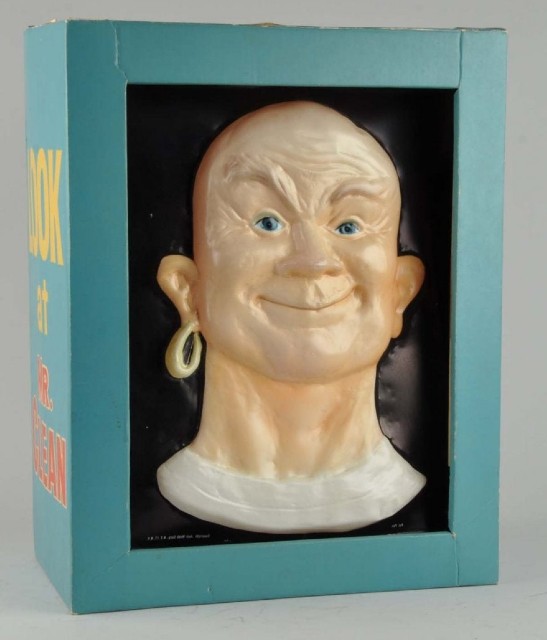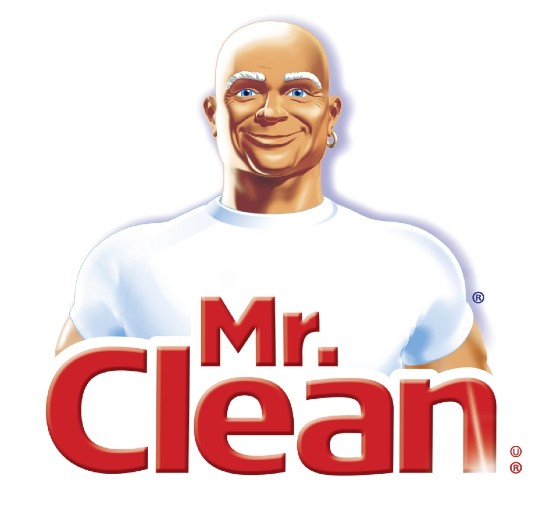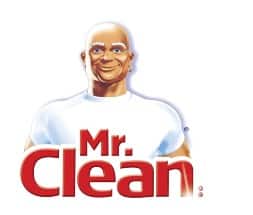
NEW YORK – Billed as “a man of few words but many muscles,” Mr. Clean has been one of America’s favorite advertising mascots (or brand character, if you prefer) for over 60 years now. He made his television debut in commercials in 1958, being played by actor House Peters Jr. before mostly becoming an animated character. Within six months, he was a household name and a top-selling cleaning product.
Proctor & Gamble, which makes Mr. Clean products, has changed the character’s appearance very little over the years. Ad designer Richard Black is widely credited as creating the look of Mr. Clean for P&G as a tall bald man with muscles and those iconic bushy white eyebrows. Reportedly, the original model for the advertising mascot was a Navy sailor from Pensacola, Fla., but children who grew up on Aladdin also think Mr. Clean, who has a gold ring in one ear, looks a lot like a certain genie. Actor Yul Brynner, who was famous for his role in the King and I, is also said to have inspired the character’s look.

The 1950s and ’60s were a golden age for advertising and given the trend at the time to personify concepts, such as Mr. Television (Milton Berle), Mr. Baseball (Bob Eucker) and Mr. Republican (former Sen. Robert A. Taft), it’s little surprise that the moniker of Mr. Clean was chosen. The product was also aimed at housewives and mothers at a time when the division of household chores largely fell to women.
In both print and TV advertising, Mr. Clean his usually depicted as jovial and smiling except for a short-lived advertising campaign in the 1960s titled “Mean Mr. Clean” when he looked stern to convey how much he despised dirt.
While Peters, a veteran character actor, originated the role, in a few commercials, actor Mark Dana briefly took up the mantle, circa 1964, giving voice to Mr. Clean, unlike most of the ads where he is the quintessential silent and strong type.

According to an advertising study by Carl W. Jones, the character’s appearance embodies all the desirable traits one would want in a brand character. “The prefix Mr. evokes images of male, power, respect, safe and status … The word clean evokes the concepts: hygienic, tidy, pure, unsullied, the color white,” he wrote.
Surprisingly, unlike his fellow brand character, Mr. Peanut, there are not a lot of advertising collectibles available with Mr. Clean’s likeness save for some action figures, which are more valuable if one has the original box. Most have the character with arms crossed over his chest but some have his arms at his sides. Most of these figures were distributed in 1961 as part of an advertising promotion. Advertising posters and store displays are more easily found and can fetch a few hundred dollars each in good condition. An illuminated and large 1960s Mr. Clean store display that was lit from the back and retained its original cardboard box sold for $550 + the buyer’s premium in September 2015 at Morphy Auctions.

Worth noting is although P&G has made millions off its Mr. Clean brand, the company didn’t actually develop this product. It was a businessman in the marine ship cleaning industry, Linwood Burton, who saw the need for a cleaner that could cut through the toughest of grease and grime but was safe for workers to use. Most of the current products available then were so caustic they were dangerous to use. With a chemistry background, Burton developed a cleaner that he sold to P&G in 1958.
A few other interesting facts about Mr. Clean: International versions of him exist but in most countries he is known as Mr. Proper. He also was never given a first name until a consumer promotion in 1963 when P&G chose the winning name of Veritably from all the submissions.
Even while the character’s look has changed little, the brand has evolved with the times and far from being retired as a product of the ’50s, Mr. Clean is still an advertising staple. “After 50 years, the original Mr. Clean jingle still prompts our minds to think of glistening oven countertops and sparkling bathroom floors. Mr. Clean’s iconic place in both pop culture and everyday clean-up have earned the brand a permanent spot inside America’s hearts, and homes,” according to a P&G press release issued for Mr. Clean’s 50th anniversary. Over the years, Mr. Clean has made star-studded appearances from NASCAR events to the MTV Video Music Awards ceremony and he is even on Facebook.
While it’s both men and women today who clean their homes, Mr. Clean’s tagline that “there is no clean like Mr. Clean” is still as applicable as when this was first written as an ad jingle.
# # #


